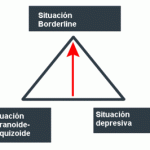Mental health articles
OF mental health care and mentally ill
Defining the Domains of Normality and Psychopathology
A pervasive problem in the study of normal–abnormal personality is how to define the domains of normality and psychopathology. There is no gold standard or widely accepted definition of what makes one person “normal” and another “abnormal.” The most widely accepted definition of PD is the one offered by the DSM (e.g., DSM-IV-TR; American Psychiatric Association, 2000), but even this definition is widely criticized because the diagnostic criteria are sometimes confusing and arbitrary, and diagnosis is categorical rather than dimensional (i.e., present vs. absent as opposed to a cut-off point along a dimensional scale; Samuel & Widiger, this volume, chapter 7).
Complicating matters is the research showing that the traits underlying some PDs may be continuous in nature while others are discontinuous (i.e., categorical; see Haslam & Williams, this volume, chapter 12; Markon & Krueger, this volume, chapter 10). Prototype models of PD (see Millon & Grossman, this volume, chapter 1; Pincus, 2005; Westen & Bradley, 2005) offer alternatives to traditional, dimensional and categorical descriptons of PD that may resolve some of the problems we have in defi nition and trait overlap. Curiously, there is no counterpart to the DSM in the realm of normality. That is, no one is diagnosed as being normal by widely accepted criteria for normality or health. Many see this as a major stumbling block that interferes with progress in the fi eld (Sabshin, 1989, 2005; Strack & Lorr, 1997).
In current research, normality is usually assumed among persons who (a) do not meet DSM criteria for PD or other mental disorder, (b) have no history of psychiatric problems, and (c) are not currently seeking help for mental health reasons. Although there is no gold standard for either normality or abnormality, there are a number of theories of personality that offer well-reasoned defi nitions for these domains, and that may be used for research purposes (see Part I of this book). Each theory defines normality and abnormality differently, but the important point is that they have specific definitions that are tied to broad theoretical constructs.
For research on normal–abnormal personality to yield valid and reliable findings, the definitions for these domains must be clearly spelled out and faithfully followed by the researcher. In this context it is important to note that because there are many competing definitions of normality and abnormality, when interpreting study results, conclusions and generalizations should be limited to the variable domain(s) within which the study was cast. For example, research on DSM PDs (American Psychiatric Association, 2000) can be generalized to other studies that defi ne and measure psychopathology the same way (i.e., use DSM criteria), but not directly to studies that defi ne psychopathology differently (e.g., those addressing Eysenck’s, 1994, model of PDs). It is a common fault for researchers to ignore the conceptual differences between different models of psychopathology, and to erroneously conclude that one study supports or does not support a particular model when the research does not actually address the model in question. This is akin to comparing apples with oranges and should be avoided.
Post Footer automatically generated by wp-posturl plugin for wordpress.
More from my site
Tags: normality, psychopathology






Leave a Reply